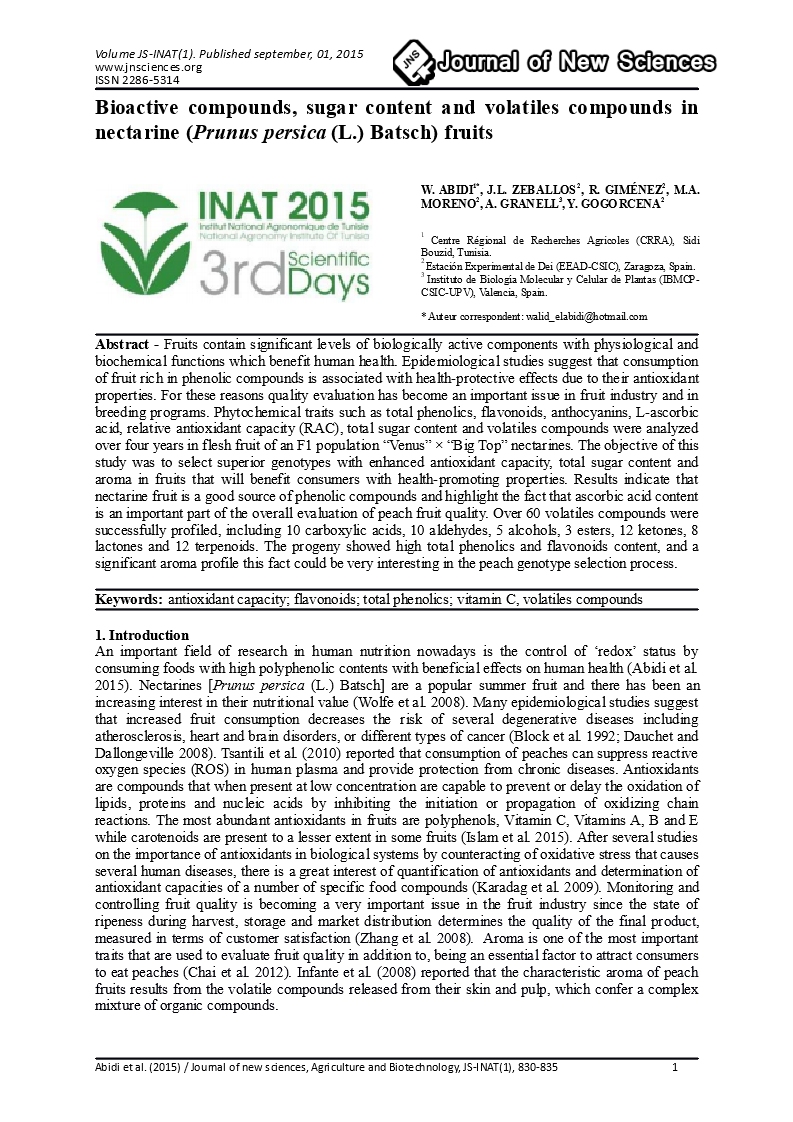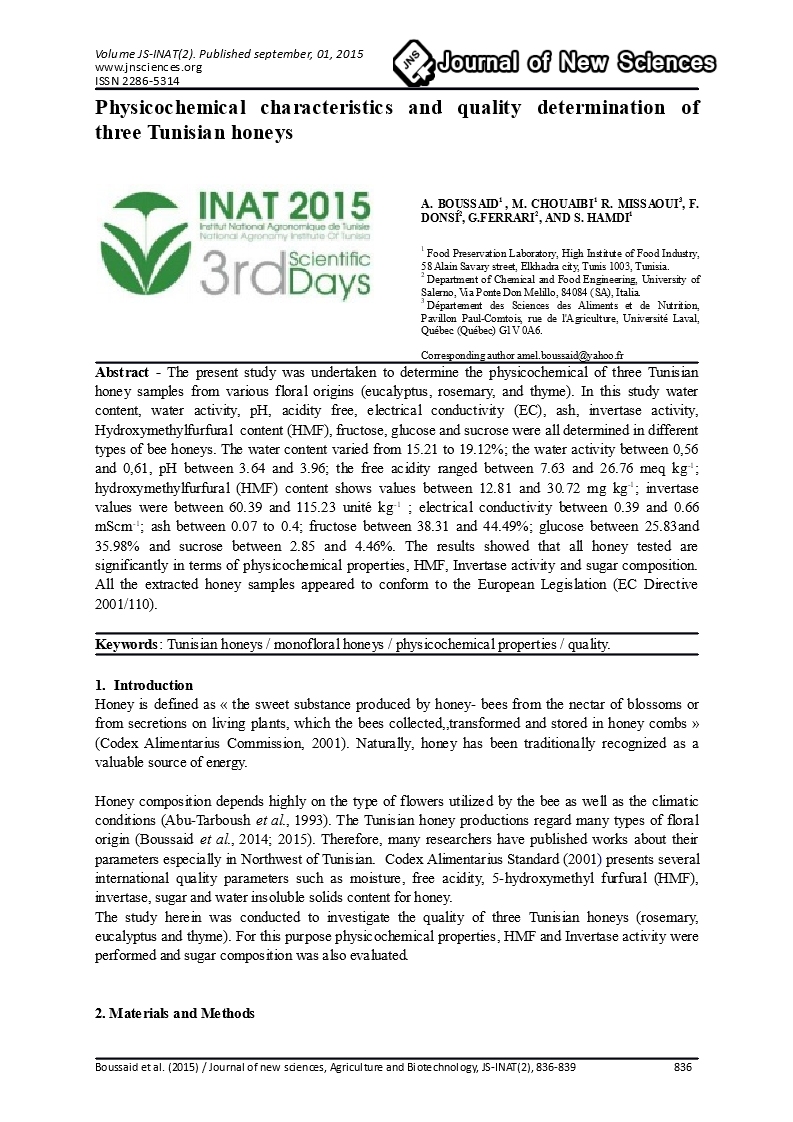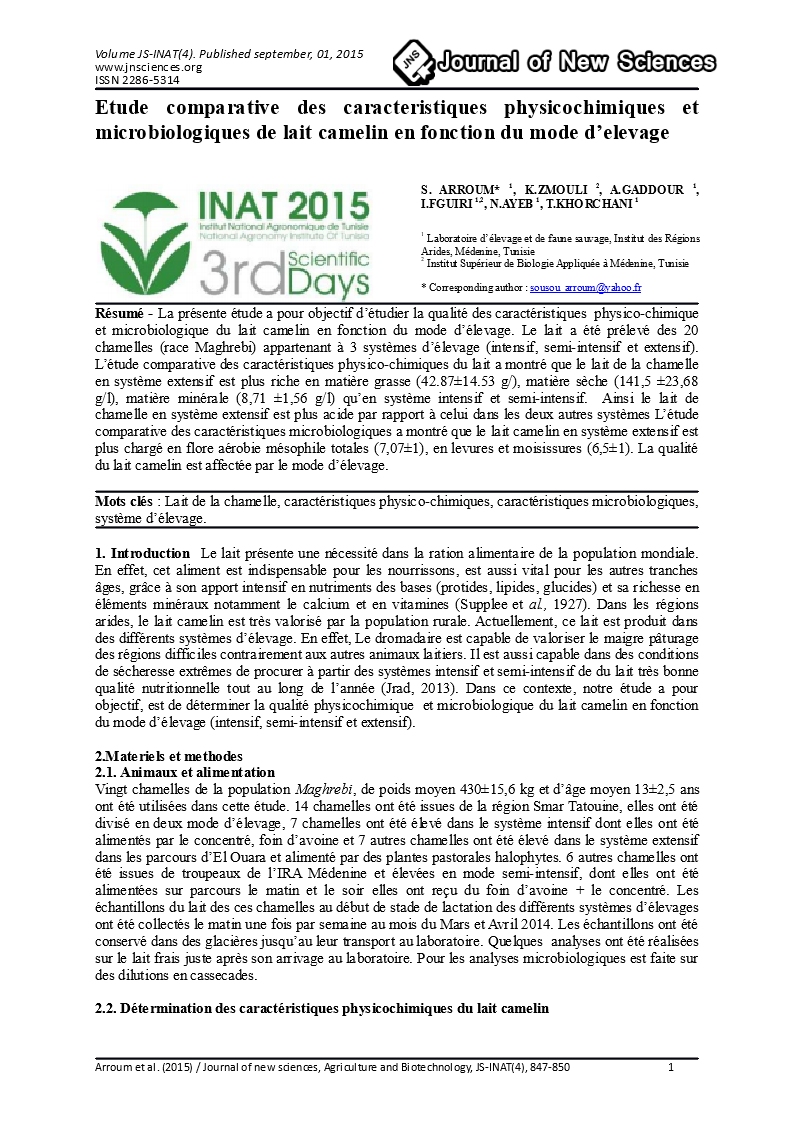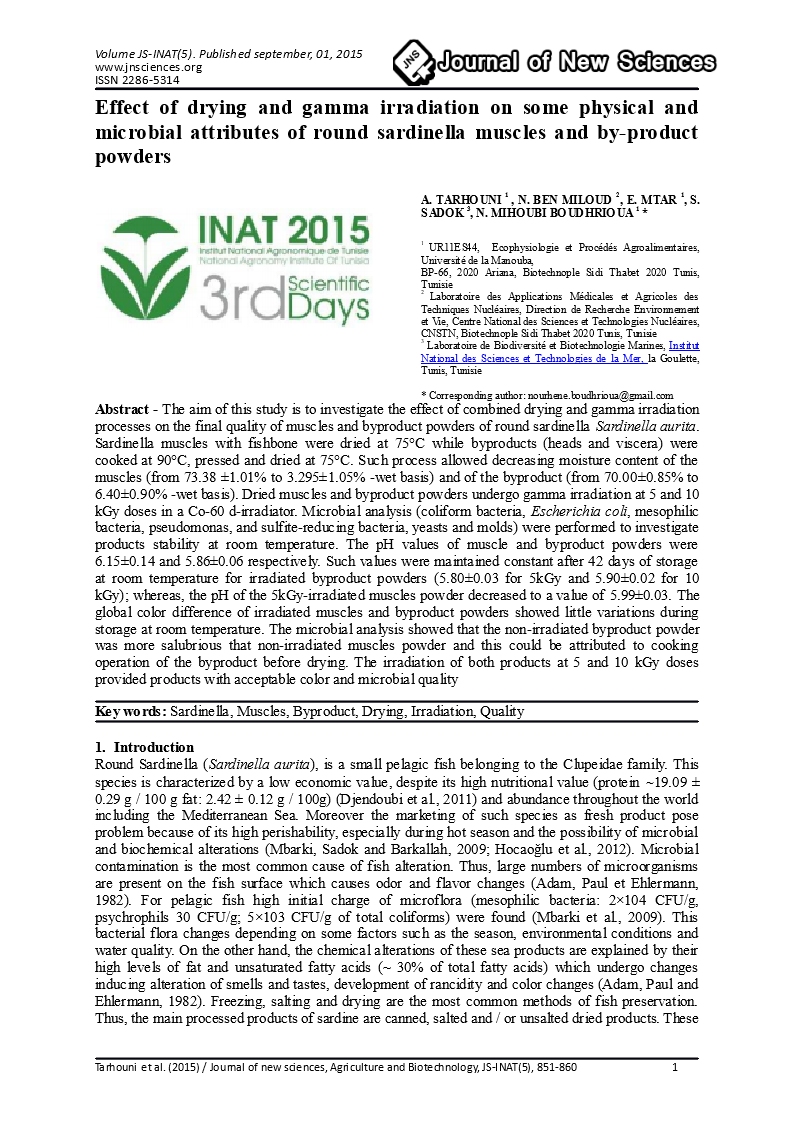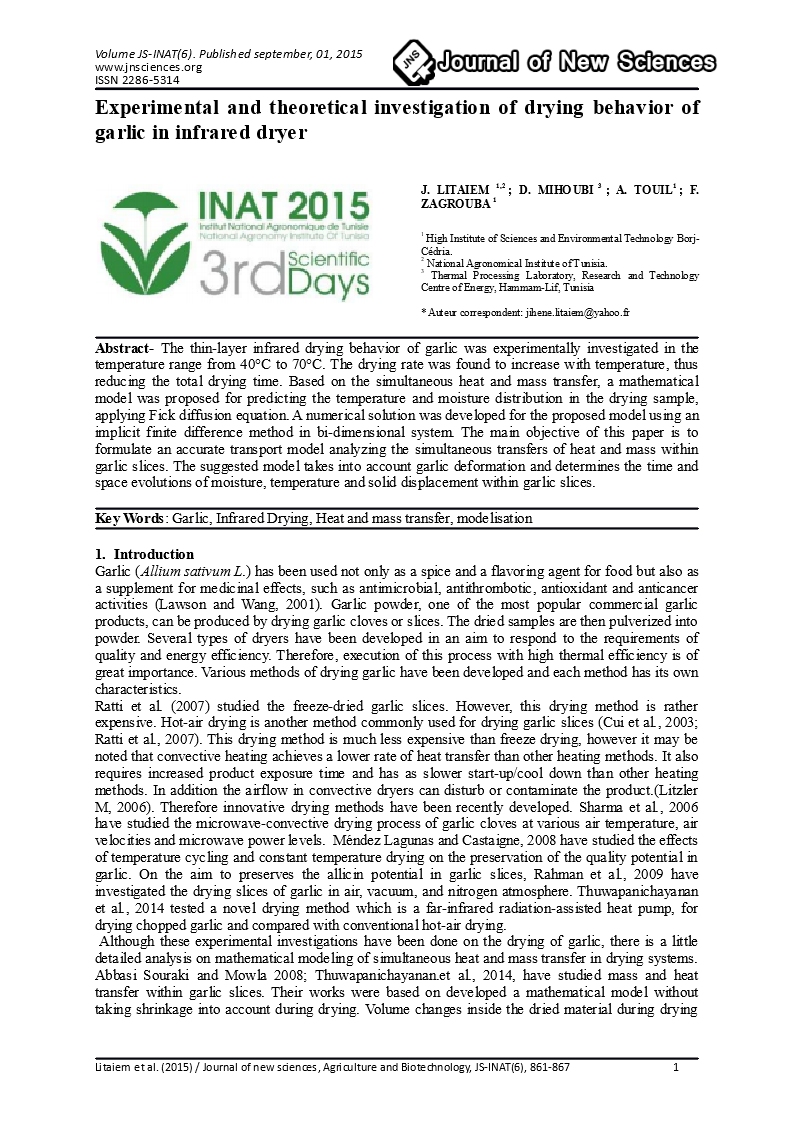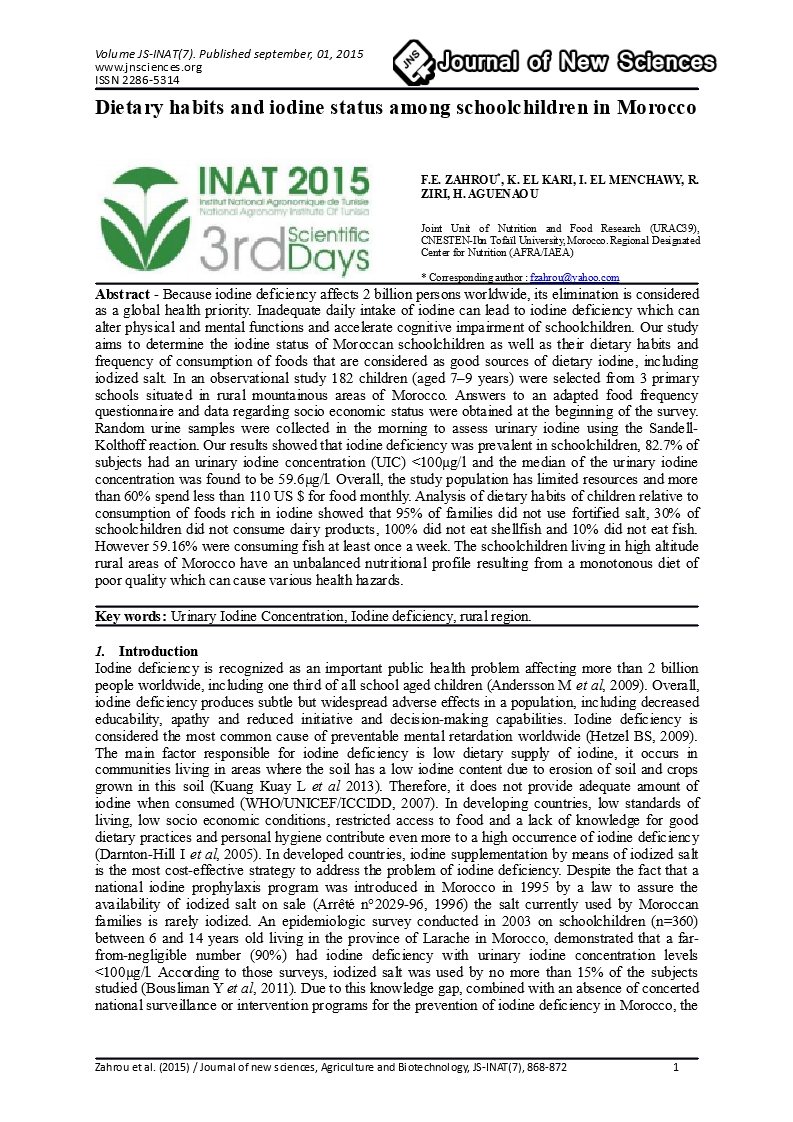- Category: Volume Spécial (Journées Scientifiques de l'INAT)
- Hits: 9410
Chemical characterization by HPLC-DAD-ESI/MS of flavonoids from hawthorn fruits and their inhibition of human tumor growth
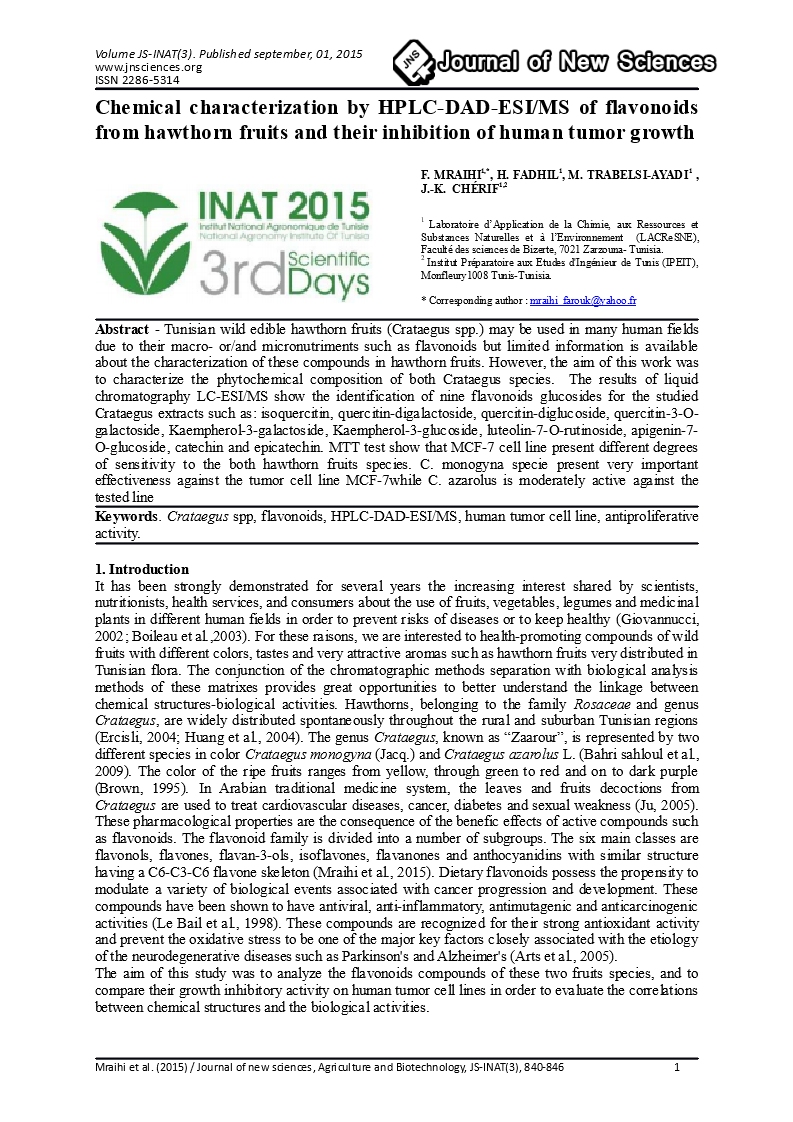
F. Mraihi1,*
H. Fadhil1
M. Trabelsi-Ayadi1
J.-k. Chérif1,2
1 Laboratoire d’Application de la Chimie, aux Ressources et Substances Naturelles et à l’Environnement (LACReSNE), Faculté des sciences de Bizerte, 7021 Zarzouna- Tunisia.
2 Institut Préparatoire aux Etudes d'Ingénieur de Tunis (IPEIT), Monfleury1008 Tunis-Tunisia.
Abstract - Tunisian wild edible hawthorn fruits (Crataegus spp.) may be used in many human fields due to their macro- or/and micronutriments such as flavonoids but limited information is available about the characterization of these compounds in hawthorn fruits. However, the aim of this work was to characterize the phytochemical composition of both Crataegus species. The results of liquid chromatography LC-ESI/MS show the identification of nine flavonoids glucosides for the studied Crataegus extracts such as: isoquercitin, quercitin-digalactoside, quercitin-diglucoside, quercitin-3-O-galactoside, Kaempherol-3-galactoside, Kaempherol-3-glucoside, luteolin-7-O-rutinoside, apigenin-7-O-glucoside, catechin and epicatechin. MTT test show that MCF-7 cell line present different degrees of sensitivity to the both hawthorn fruits species. C. monogyna specie present very important effectiveness against the tumor cell line MCF-7while C. azarolus is moderately active against the tested line
Keywords. Crataegus spp, flavonoids, HPLC-DAD-ESI/MS, human tumor cell line, antiproliferative activity.

